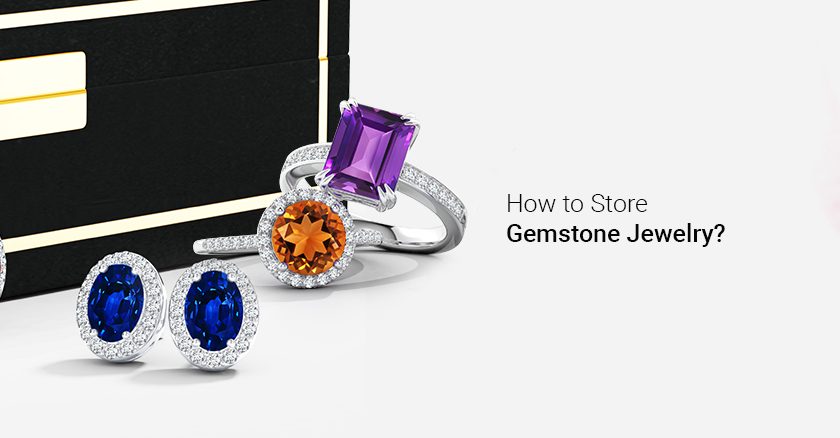Well, the answer to this question mainly depends on what type of gemstone you own. The glittering world of jewellery is expansive and is comprised of many precious and semi-precious gems. Like us, they too are unique in their ways.
To help you understand how to store them appropriately, we’ll divide the gemstones into three main categories
1. The Tough Gems
Diamond, Ruby, Sapphire and Moissanite fall in this category. They’re known for their beauty and brawn! These exceptionally hard gemstones are perfect for everyday wear as they’re highly resistant to damages that can occur with continuous usage. However, they can end-up scratching other gems (and each other) if stored incorrectly.
Storage Must-Do
These precious stones are also extremely valuable. So, if you intend to wear them only for special occasions, then we recommend you keep them locked in a safe. Remember each of these gems requires ‘breathing space’ so keep them away from each other. Use a velvet-lined case or pouch and tuck them away individually.
If you wish to wear any of these gems on a daily basis then bring home a compartmentalized storage box with built-in segregation. Let this box be assigned specifically for the precious and tough gems mentioned here so it’s easier to access as you know exactly what’s inside.
2. Considerably Durable
Next on the list are gems that aren’t as hard as the ones mentioned above, but they are not delicate either. Some of the jewels that fall into this particular category include Aquamarine, Morganite, Amethyst, Citrine, Garnet and Tourmaline. Note that most of them are suitable for daily wear just that you’ll need to handle them with care.
Storage Must-Do
As mentioned earlier, these jewels too need to be segregated. You can do this by keeping them in a plastic container that comes with in-built dividers. It’s an inexpensive and practical storage solution. If you’re unsure about this option, you can also consider packing your coloured gemstone jewellery pieces in a parcel paper organiser. It is designed to hold industry-standard small paper envelopes called gemstone parcel papers that are acid-free in nature. This particular feature will help keep the gems in top condition while in storage.
3. Delicate Beauties
Emerald is a precious stone that isn’t as soft as some of the others mentioned in this category. But it has a property called ‘gemstone cleavage’ which means a hard blow can result is complete breakage. Opal and Pearl, on the other hand, can definitely be classified as ‘delicate’. They’re highly susceptible to scratches and other forms of damage.
Storage Must-Do
For Opal, we suggest you use a soft bag made of cloth for storage. This will help maintain their shine and quality. If you intend to wear this gem more regularly then seal it in a plastic bag with a slightly dampened cotton wool. This technique will help retain the Opal’s moisture level. When it comes to Pearl, make use of linen or a soft cloth/pouch. Strictly avoid airtight package, such as a plastic bag. Like the Opal, the Pearl also needs the presence of moisture to maintain its shine. We would recommend keeping this gem in a ventilated storage space that allows you to leave a damp cloth nearby. For jewellery embellished with Emeralds, it would be wise to wrap them individually in tissues or soft cloths and place them in separate compartments of a jewellery box.
Parting Note
Irrespective of which gem you own, make it a point to treat them with love, care and attention. Protect them from harsh chemicals and make it a point to get them cleaned and chequeed by a professional at least once a year. This will ensure your gemstone jewellery stays sparkling for a long time.
Also Read – What is the Best Way to Store Pearls?




























